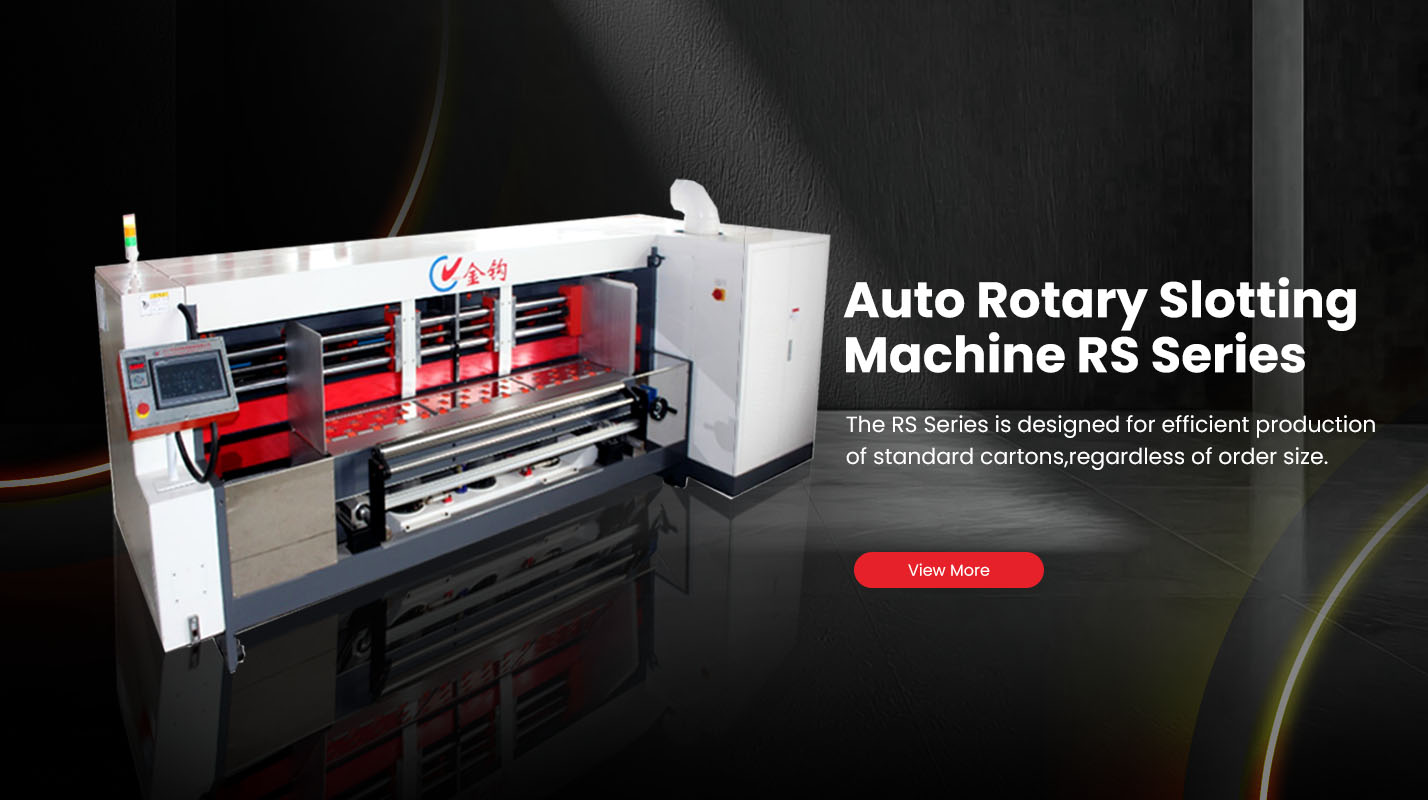Understanding The Role Of Rotary Slotter Machines in Carton Production
In corrugated packaging manufacturing, precision is everything. Each carton must be cut, slotted, and folded perfectly to ensure it protects the product inside, stacks neatly, and maintains structural integrity during transport.
At the heart of this process is the rotary slotter machine — an essential piece of equipment that determines both the efficiency and accuracy of box production.
What Is a Rotary Slotter Machine?
A rotary slotter machine is designed to cut and crease corrugated cardboard sheets into pre-defined patterns that can be folded into boxes.
The machine performs two key functions simultaneously:
Slotting: Vertical cuts that form the box’s top and bottom flaps.
Scoring (creasing): Indented fold lines that allow smooth folding without cracking.
Using rotating cutting knives and scoring wheels mounted on precision cylinders, the rotary slotter processes corrugated sheets continuously — ensuring high-speed output and consistent results across every sheet.
Why Rotary Slotting Is Essential in Carton Production
Every box starts as a flat corrugated board. Before it can be folded and glued, it must be accurately slotted and creased to define where each fold and flap will go.
Rotary slotting ensures:
Exact box dimensions, improving stacking and assembly.
Uniform flap openings, making gluing or stitching easier.
Accurate folding lines, reducing cracking or deformation.
In short, a rotary slotter is what turns plain corrugated sheets into ready-to-assemble box blanks, forming the foundation for the entire packaging line.
Main Components of a Rotary Slotter Machine
A modern rotary slotter includes several integrated sections, each with a specific function:
Feeding Unit – Feeds corrugated sheets smoothly into the slotting section.
Slotting and Scoring Drums – Cylinders equipped with cutting knives and scoring wheels.
Positioning System – Adjusts the distance between knives and scoring heads.
Transmission System – Ensures synchronized motion between feed and cutting units.
Digital Control Panel – Allows operators to set box dimensions, knife positions, and scoring pressure.
In advanced models, like those produced by JINGOUPACK, the knife and scoring heads are servo-controlled — allowing automatic positioning via touchscreen interface with ±0.3 mm accuracy.
How a Rotary Slotter Works
Sheet Feeding: The corrugated sheet is drawn into the machine through the feed rollers.
Slotting: Rotary knives cut vertical slots to define the flaps and side panels.
Scoring: The scoring wheels create fold lines at exact intervals.
Edge Trimming: The edges of the sheet are trimmed for uniform width.
Discharge: Finished sheets exit the machine and move to the folding or gluing unit.
This continuous rotary motion enables high-speed production — often up to 150 sheets per minute — while maintaining uniformity and accuracy.
The Benefits of Using Rotary Slotter Machines
1. High Precision and Consistency
Servo-controlled adjustments maintain exact spacing between knives and scoring wheels, ensuring every box meets specification.
Slot accuracy within ±0.3 mm.
Consistent crease depth for clean folds.
Reduced misalignment and waste.
2. Fast Setup and Changeover
Digital control systems allow operators to adjust dimensions instantly from the touchscreen — no manual tools or lengthy calibration needed.
Setup time reduced from 20–30 minutes to under 3 minutes.
Ideal for factories handling multiple box sizes daily.
3. Increased Efficiency and Productivity
Continuous feeding and cutting minimize downtime and manual intervention.
Modern JINGOUPACK rotary slotters can process 100–150 sheets per minute, providing up to 40% higher throughput compared with older models.
4. Lower Material Waste
Accurate cutting and alignment reduce offcuts and mis-slotted sheets.
This not only saves material costs but also supports sustainability goals by reducing waste generation.
5. Integration with Automated Lines
Rotary slotters form part of a complete corrugated packaging line, often working alongside:
slitter scorer machines (for width cutting and creasing).
Printing slotter die cutters (for graphic application).
Folder gluers (for assembly).
When integrated digitally, these machines operate in perfect synchronization — improving efficiency across the entire production chain.
Manual vs. Automatic Rotary Slotter Machines
| Feature | Manual Slotter | Automatic Servo Slotter |
|---|---|---|
| Knife Adjustment | Manual handwheel | Servo-driven digital control |
| Setup Time | 20–30 min | 2–3 min |
| Accuracy | ±1 mm | ±0.3 mm |
| Speed | 40–60 sheets/min | 120–150 sheets/min |
| Job Memory | Not available | Available |
| Labor Requirement | 2–3 operators | 1 operator |
| Ideal For | Small workshops | High-volume, multi-size production |
Automatic servo slotters are the preferred choice for modern packaging factories seeking speed, flexibility, and consistent precision.
Safety and Certification
Since rotary slotters involve sharp blades and fast rotation, safety is a top priority.
JINGOUPACK’s CE-certified models include:
Multi-point emergency stop buttons.
Safety covers with auto shutoff sensors.
Overload and grounding protection.
These features ensure safe, compliant operation in accordance with European CE and ISO standards.
Maintenance Tips
To keep rotary slotter machines running smoothly:
Clean dust and scraps daily from blades and cylinders.
Lubricate shafts, bearings, and gears weekly.
Inspect scoring wheels for uneven wear.
Replace worn blades promptly to maintain clean cuts.
Calibrate knife alignment every few months for consistent results.
With proper maintenance, a quality rotary slotter can deliver over 10 years of reliable performance.
Applications Across Packaging Sectors
Rotary slotter machines are widely used in the production of:
Shipping cartons and outer boxes
Food and beverage packaging
E-commerce boxes
Electronics and industrial cartons
Their ability to handle different corrugated grades (A, B, C, E flute) makes them suitable for both standard and custom packaging production.
Why Choose JINGOUPACK Rotary Slotter Machines
JINGOUPACK delivers advanced rotary slotter machines engineered for:
Servo precision and digital control.
Energy-efficient drive systems.
Durable, hardened steel blades.
Compact design for space-saving production.
Global after-sales support and spare parts availability.
Every unit is tested under strict quality standards to ensure stability, reliability, and compliance for global export markets.
Conclusion
The rotary slotter machine is a cornerstone of modern corrugated box production — bridging the gap between raw sheet processing and final box assembly.
Its precision, speed, and automation capabilities make it indispensable for any packaging factory seeking high efficiency and consistent quality.
With advanced servo control, CE-certified safety systems, and a strong focus on performance, JINGOUPACK’s rotary slotter machines empower manufacturers to reduce waste, improve productivity, and stay competitive in today’s fast-changing packaging industry.





